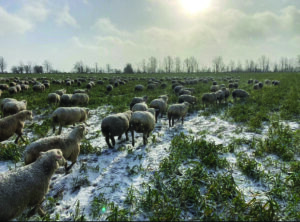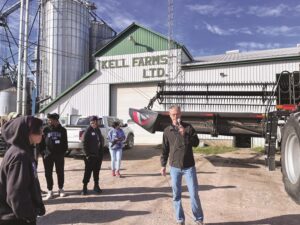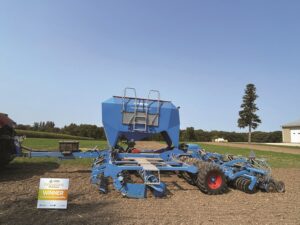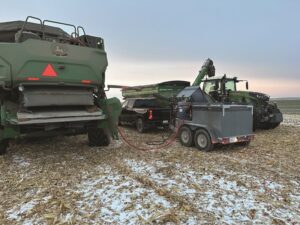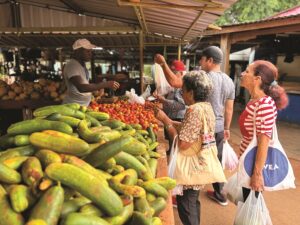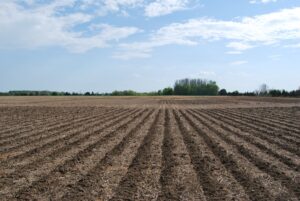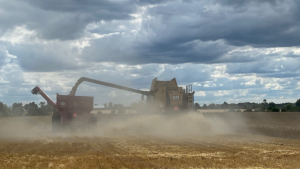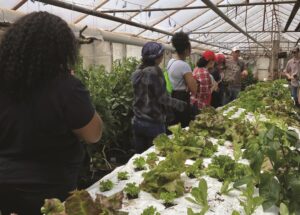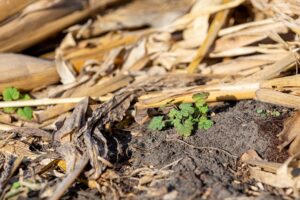Tailoring the tar spot response
RESEARCH PROJECT DETERMINES BEST APPROACH
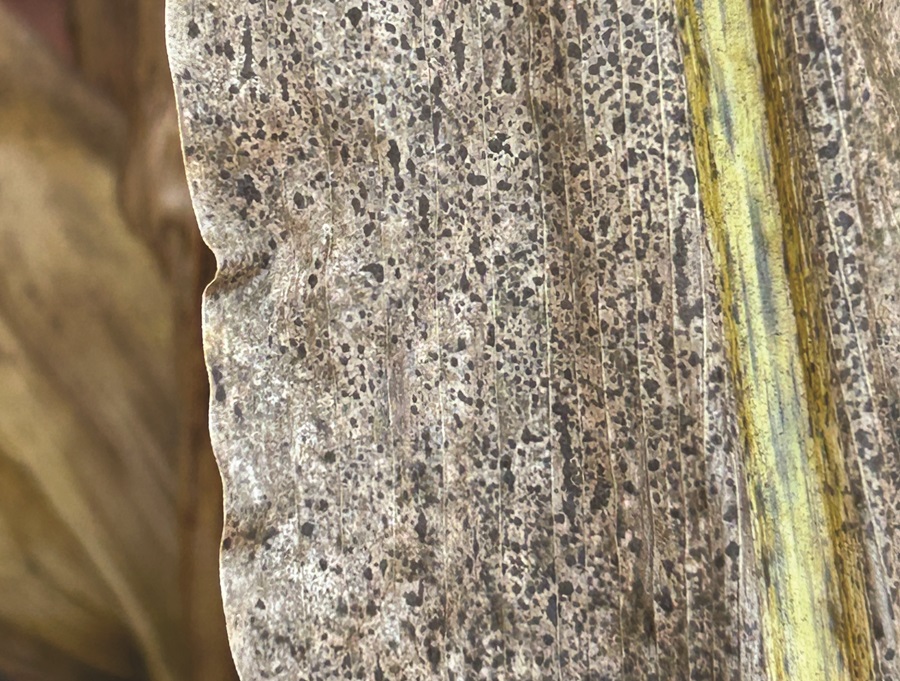
Tar spot is here to stay – but corn growers don’t have to live in fear of the disease.
That’s the takeaway message from Albert Tenuta, Ontario Ministry of Agriculture, Food and Agribusiness (OMAFA) field crop pathologist. Tenuta and Dr. Dave Hooker, professor and field crop agronomist at the University of Guelph Ridgetown Campus, are working on a project to develop an integrated management control strategy for the pathogen in Ontario. Although tar spot can bring significant yield losses and cause harvest difficulties, Tenuta’s message to growers is to consider tar spot the same as any other regional disease. Like Fusarium head blight in wheat or white mould in soybeans, awareness and proactive management can control it.
“Don’t get caught in the idea of managing the weather,” says Tenuta. “You can’t change the weather. You’re managing the crop.”
TOLERANT HYBRIDS THE BEST TOOL
Severe tar spot infection can significantly weaken corn standability and yield. Field trials of fungicide-treated plots and untreated controls near Rodney, says Tenuta, generally show a 20 to 40 bushel per acre loss in untreated corn – although he has occasionally seen notably higher losses. The severity of losses is closely tied to seasonal conditions, with warm and damp weather at the wrong time, bringing greater losses.
Anecdotally, Tenuta adds discussions with Ontario growers also highlight a 20 to 40 bushel per acre gain in treated corn acres, confirming the yield disparity documented in the Rodney plots.
By far, Tenuta says the best way to reduce the risk posed by tar spot is by planting more tolerant hybrids.
Both Tenuta’s hybrid trials and trials conducted by partnering researchers in the United States have reached this conclusion. Work to genetically map hybrids showing the best resistance potential is ongoing in both the public and private sphere, as are efforts to map the germplasm of resistant tropical corn varieties (from areas where tar spot originated) and understand the difference – or lack thereof – between Mexican and Caribbean varieties of tar spot. Both varieties are present in Ontario, but thus far, Tenuta says there appears to be little real difference between them.
FUNGICIDES AND APPLICATION TIMING
After beginning with a tolerant hybrid, growers can further hedge their bets with effective fungicides and good application timing.
All fungicides tested at Tenuta’s Rodney-area trials brought some degree of tar spot control and reduction. Application timing coincided with the VT stage — the traditional time Ontario growers try to address potential issues with fungi such as Gibberella — although applications were also made at stages R3 and R4. No response was observed in these latter stages, however.
Tenuta says the good news is fungicides effective against other problem diseases, like northern corn leaf blight and the aforementioned Gibberella, are also effective against tar spot. This has proved true in both dry and wetter conditions. Growers, he says, “don’t have to change practices. They just have to be vigilant.” That means applying the same philosophy employed in spraying for weeds and insect pests, and scouting to ensure applications have been effective.
When asked about fungicide resistance in tar spot, Tenuta says the now-standard practice of using multiple modes of action in fungicide applications means the risk of resistance developing is not high, at least right now.
“We’re always concerned about resistance…There’s no indication we’re seeing any tar spot resistance developing here,” he says.
RAISE YOUR AWARENESS
Improving your knowledge of the risk of tar spot each season is also a foundation of integrated management. To this end, growers can consult a series of resources, including the Tarspotter app – a cross-border tool to assist in making fungicide application and timing decisions – Corn IpmPIPE – a website detailing tar spot spread and severity by county in Ontario and American states – as well as the Crop Protection Network and its Tar Spot Working Group.
“We’re part of that through Grain Farmers of Ontario support, allowing us to be proactive and initiate management tools and strategies immediately as opposed to waiting or not being able to,” says Tenuta, referring to both cross-border collaborations generally and the Tar Spot Working Group specifically.
“In 2021, we had the tools ready, the research already going, because of the connection with colleagues in the United States. By mid- season, we already had an integrated tar spot management program available to growers.” •











